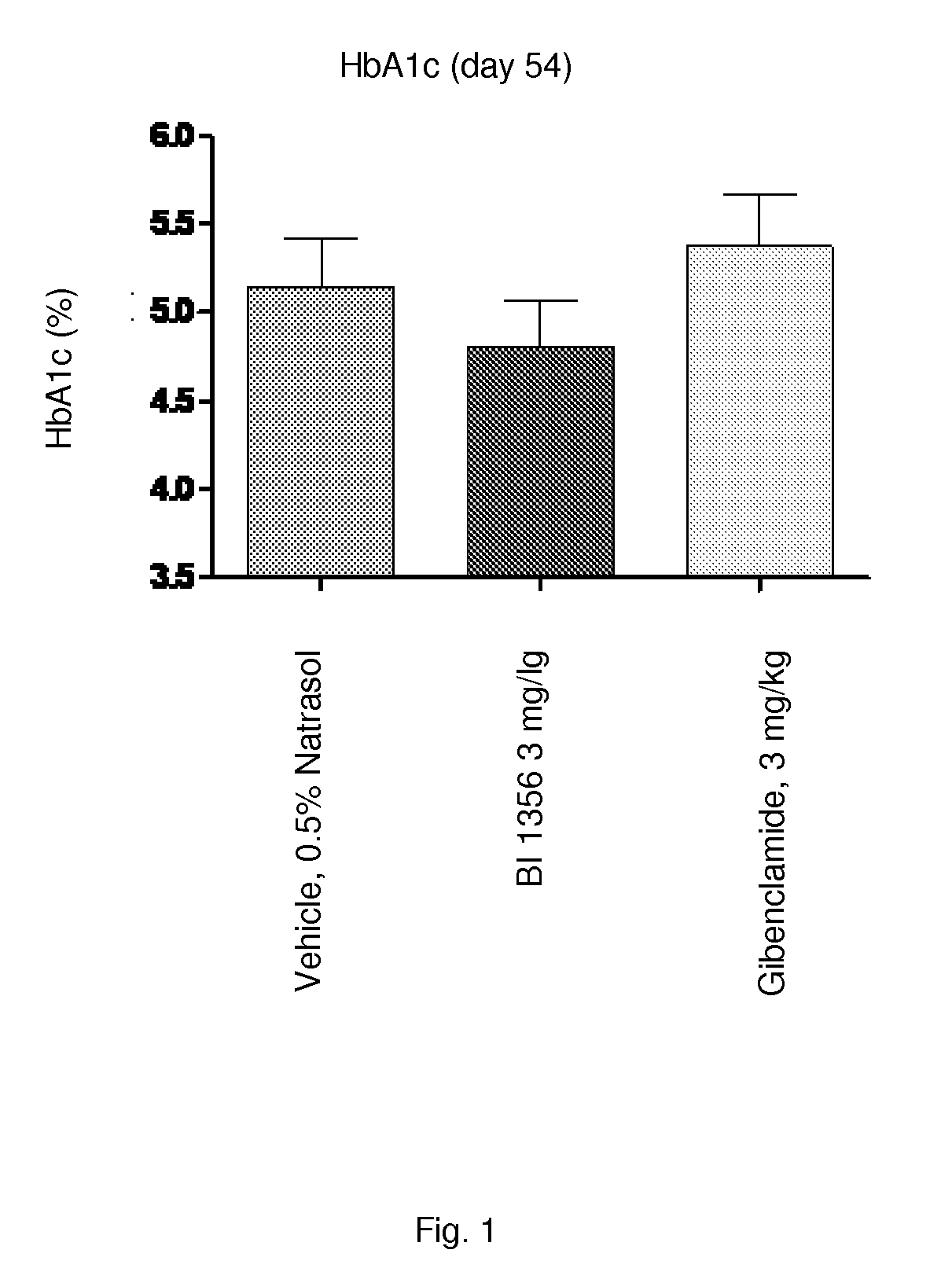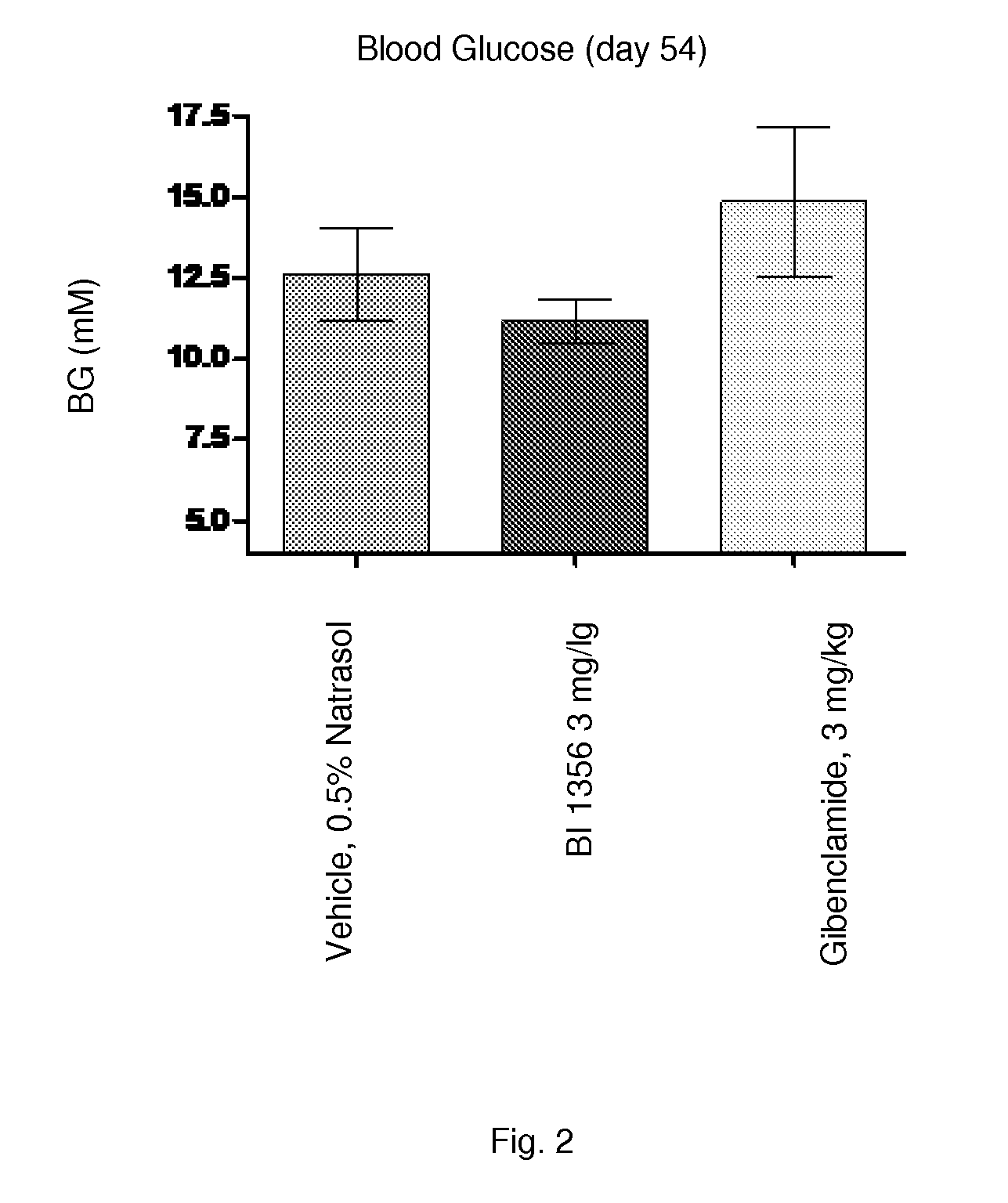Treatment for diabetes in patients with insufficient glycemic control despite therapy with an oral or non-oral antidiabetic drug
a glycemic control and diabetes patient technology, applied in the direction of peptide/protein ingredients, extracellular fluid disorder, metabolic disorder, etc., can solve the problems of high secondary failure rate, increased risk of hypoglycemia, and inability to meet the needs of patients with diabetes, so as to protect diabetic microangiopathy.
- Summary
- Abstract
- Description
- Claims
- Application Information
AI Technical Summary
Benefits of technology
Problems solved by technology
Method used
Image
Examples
examples
[0230]Sulfonylurea (SU) like glibenclamide are one of the most frequently used drugs in diabetes treatment. Long-term treatment with SU causes elevated basal insulin secretion and decreased glucose-stimulated insulin secretion. These characteristics may play an important role for the development of hypoglycemia and secondary drug failure. Db / db mice represent an animal model for type 2 diabetes demonstrating insulin resistance and high levels of plasma glucose. In addition, correlating with age of the animals pancreatic 8-cells of aging db / db mice fails to compensate the high glucose excursion with enhanced insulin secretion. Therefore this model is appropriate to study the glibenclamide induced secondary drug failure in comparison to a DPP-4 inhibitor (e.g. BI 1356).
Methods
Animals and Housing
[0231]Female db / db mice at 5 weeks of age, are obtained from Charles River, Germany. Animals are housed in groups of 5-6 animals under a 12:12 L / D cycle (lights on at 04:00 AM and l...
PUM
| Property | Measurement | Unit |
|---|---|---|
| life time | aaaaa | aaaaa |
| body weight | aaaaa | aaaaa |
| body weight | aaaaa | aaaaa |
Abstract
Description
Claims
Application Information
 Login to View More
Login to View More - R&D
- Intellectual Property
- Life Sciences
- Materials
- Tech Scout
- Unparalleled Data Quality
- Higher Quality Content
- 60% Fewer Hallucinations
Browse by: Latest US Patents, China's latest patents, Technical Efficacy Thesaurus, Application Domain, Technology Topic, Popular Technical Reports.
© 2025 PatSnap. All rights reserved.Legal|Privacy policy|Modern Slavery Act Transparency Statement|Sitemap|About US| Contact US: help@patsnap.com



